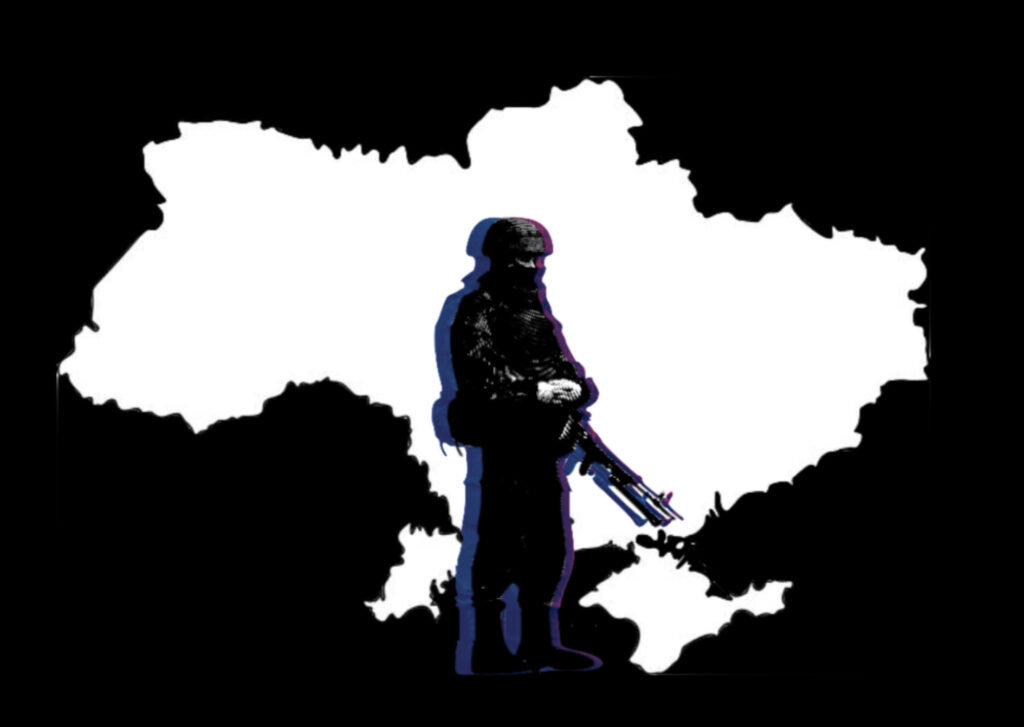LOS ANGELES — The last time a foreign power invaded Europe, few people owned a television. Radio was the most common form of communication, and Steve Jobs was decades from being born. However, now, as Putin moves to occupy Ukraine, our digital landscape has evolved dramatically.
So has war.
As the first Russian planes began to lay siege on Kyiv, Ukrainian citizens immediately took up arms. Members of parliament stood in line for weapons, civilian militias organized, and babushka grandmothers proudly flaunted their Kalashnikov rifles. However, Ukraine’s response wasn’t just on the ground. It was online as well, and one particular platform has become a hotbed for raw, unfiltered and short videos documenting real-time developments.
TikTok, a video-focused social networking app, has grown in popularity over the past couple of years. It has become known for its 30-second dances and lip-syncing mobile videos that can generate millions of views in a matter of days and thrust random teenagers into internet fame. This ability stems from its app-specific algorithm, which amplifies user-generated videos over professional content. Its free, decentralized method of content creation is perhaps the most evident reason why videos in Ukraine are gaining so much traction. The app’s translation technology makes captions and comments readable in several languages, thereby lowering the language barrier to understand the contents of a video.
Ukrainian citizens, perhaps unknowingly, have used this design to their advantage. In recent days, videos have circulated TikTok showing Russian tanks completing training exercises, Ukrainian soldiers posing with weapons, families frantically searching for bomb shelters and even active combat footage. These videos demonstrate a fascinating phenomenon in the age of the internet.
We can watch war on Tiktok. And we can do so in real-time.
The phenomenon isn’t wholly unsurprising. The idea of reading, listening and watching war updates is not new, but the method by which information is disseminated has drastically changed. During the American Civil War, the only way the public stayed informed about campaigns, battles, casualties and other developments was through the local newspaper. Army correspondents, who journeyed alongside soldiers, reported stories to their respective outlets that reflected their own experiences or that of other soldiers. Similarly, during both World Wars — when war reporting really came of age — newspapers and television were the primary methods by which the general public got a glimpse of a war fought overseas.
A uniting fact, however, is that this information could be — and was — heavily censored, altered or opinionated by members of a political and media elite that wanted to maintain an image of victory. Especially during World War II, war correspondents experienced censorship and control by the American government in order to perpetuate an idea of American success in the war effort and maintain morale at home. Additionally, it took days, weeks or even months to become aware of events that took place overseas. Anne Frank’s diary was published three years after it was discovered, meaning that many people were learning of the horrors of Nazi Germany after the war’s end, rather than being able to empathize with people on the ground as it happened.
But the 21st century has created a new digital landscape that has revolutionized how we see, hear and think about conflict. It has also provided a new medium through which war efforts can gain traction.
This phenomenon was especially poignant during the Arab Spring protests that took place from 2010 through 2012. Local citizens in Tunisia, Egypt and Syria used social media as a tool to organize protests, disseminate updates and spread information globally to raise awareness about grievances and abuse. Similar occurrences were seen in Sudan and Hong Kong as users around the world re-shared graphic videos of human rights abuses and tweeted messages from revolution leaders.
What makes Ukraine different?
As an authoritarian leader, Putin has near-complete control of the digital narrative in his country. When dissent boils, the regime employs a variety of tactics to censor it, including a centralized blacklist, internet filtering, media restrictions, virtual private network (VPN) bans and more. The same holds true for most recent civil wars and separatist movements that have been documented on social media. In Sudan, the 2017 civil war led the Sudanese government to install immense restrictions on the press and news media. Similarly, during the Hong Kong protests, the Internet was tightly restricted and the Chinese government shut down activist social media movements.
But dynamics change when you invade an independent sovereign country. The moment Russian troops crossed the Russian-Ukrainian border, Putin’s system for control essentially evaporated. Ukrainian citizens have no censorship restrictions holding them back from posting Russia-implicating content, thereby putting them almost entirely in control of the social media narrative. And so far, it appears to be working. #Ukraine has 17 billion views on TikTok, 31.9 million posts on Instagram and millions of tweets. The uncensored, archival media has lessened the degree of separation between the conflict and the world, creating a global movement against the Russian invasion. A fourteen-year-old in Seattle can be as close to the battlefront as those on the ground in Kyiv, and it results in a collective sentiment of shock.
“I can’t believe I’m watching a war on TikTok,” one user commented under a video showing active combat through a shaky phone camera.
Another video shows a Russian helicopter being shot down. One user commented, “[I’m] [w]atching war in real time on a dance app.”
For this reason, TikTok is the antithesis of the Russian communication strategy, and it is possible that it caught Putin off guard. The last thing an authoritarian aggressor wants is for his invasion to be humanized because if the public sees the faces of those in front of his gun — and those behind it as well — his lies to justify war lose all of their merit.
To combat this, Putin has employed familiar censorship tactics in his own country. After it was revealed that Russian soldiers were accidentally sharing army secrets on TikTok (and Ukrainian military analysts used them to predict troop movement), the military took efforts to dissuade soldiers from using the app. Putin has also recently blocked access to Twitter within his borders, further restricting the news that his own citizens can receive. The movement is also hurt by rampant misinformation and misleading videos, which NPR says have surged over the past week.
Perhaps this serves as evidence that Ukraine is winning the online war. Or, maybe it is a misleading victory that could be devastated by Russia’s Roskomnadzor, the Kremlin’s censorship and disinformation titans. The conflict is only days in its development, but for now, the fight to protect Ukrainian sovereignty remains steadfast online and on the ground.





